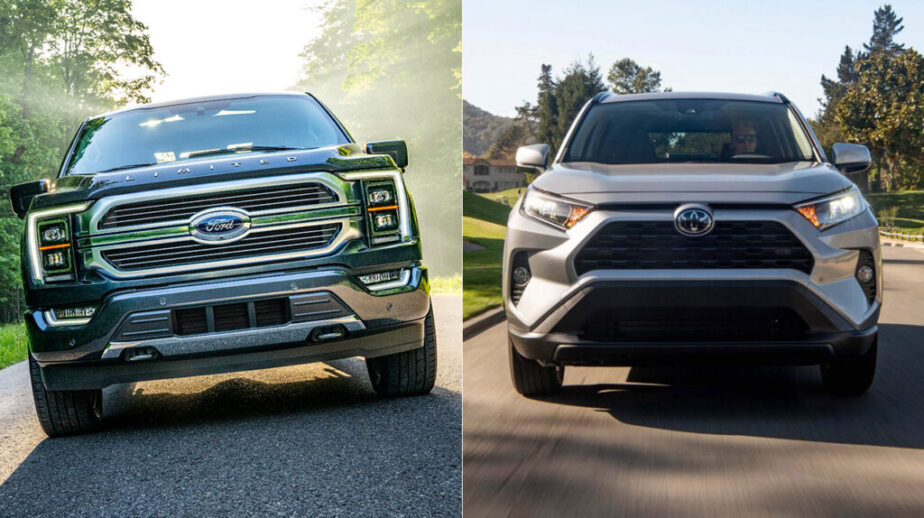Car ownership and usage in Canada reflect diverse regional characteristics shaped by factors such as urbanization, income levels, geography and lifestyle. From the vast rural landscapes of Alberta to the densely populated urban centres of Ontario, vehicle preferences and driving habits vary widely across the country. This blog explores key aspects such as car ownership in Canada, including the number of vehicles per household, annual kilometres driven, preferred vehicle brands, popular vehicle types, purchasing versus leasing trends, and the growing consideration for hybrid or electric vehicles.
Number of Vehicles
Car ownership rates differ across provinces, reflecting regional lifestyles and economic conditions.
- Alberta: High vehicle ownership with 81% of households owning two or more vehicles. Only 1% of households have no vehicles, and 18% own just one vehicle. This reflects the province’s rural nature and the necessity for multiple vehicles per household.
- British Columbia: A significant proportion of households (74%) own two or more vehicles. 1% have no vehicles, and 25% own one vehicle. Urban centers like Vancouver contribute to the lower single-vehicle ownership.
- Ontario: With its mix of urban and rural areas, 72% of households own two or more vehicles. About 1% have no vehicles, and 27% own one vehicle, influenced by urban areas like Toronto.
- Quebec: High vehicle ownership with 83% of households owning two or more vehicles. 1.5% have no vehicles, and 15% own one vehicle, reflecting the diverse needs of both urban and rural areas.
- Manitoba: High vehicle ownership with 74% of households having two or more vehicles. Only 1% have no vehicles, and 25% own one vehicle, typical of rural provinces.
- Saskatchewan: Similar to Manitoba, 76% of households own two or more vehicles. Only 1% have no vehicles, and 23% own one vehicle, highlighting rural and agricultural needs.

Annual Kilometers Driven
Driving distances also vary across provinces, largely influenced by geography, population density, and commuting patterns. Rural areas, where travel for work, shopping and leisure often requires longer distances, generally report higher annual kilometers driven.
- Alberta: Households report an average of 22,000 km driven annually, with rural areas reaching up to 28,000 km and urban areas around 18,000 km.
- British Columbia: Annual mileage averages 18,500 km, with urban drivers covering around 14,000 km and rural drivers up to 24,000 km.
- Ontario: The average distance driven is around 20,000 km, with urban drivers travelling 16,000 km and rural drivers reaching up to 25,000 km.
- Quebec: With a higher reliance on public transportation in major cities, the average annual distance driven is 17,000 km, with urban drivers averaging 12,000 km and rural drivers up to 22,000 km.
- Manitoba: Given the rural nature of the province, drivers cover around 21,000 km annually, with rural drivers reaching 26,000 km.
-
Saskatchewan: Annual mileage is among the highest, averaging 22,000 km, with rural drivers travelling up to 27,000 km.

Leading Vehicle Brands
Consumer preferences for vehicle brands often align with regional economic activities, environmental factors, and infrastructure availability
- Alberta: Dominated by a resource-based economy, Ford is the most popular brand, particularly for trucks and larger vehicles used for work purposes.
- British Columbia: With an emphasis on fuel efficiency, Toyota leads the market, especially in urban areas where compact and eco-friendly vehicles are prioritized.
- Ontario: Urban centers like Toronto drive demand for compact and reliable cars, making Honda a popular choice.
- Quebec: Similar to British Columbia, Toyota dominates due to the high demand for fuel-efficient, low-maintenance vehicles
- Manitoba and Saskatchewan: Both provinces lean toward Ford and GM, reflecting a need for durable trucks suitable for agricultural and rural work.
Vehicle Type Preferences
The type of vehicle consumers prefer further demonstrates how geographic and economic factors shape car culture across Canada.
- Alberta and Saskatchewan: Trucks dominate the market, driven by the provinces’ rural nature and dependence on agriculture and natural resources.
- British Columbia and Quebec: Sedans and compact cars are preferred in urban areas due to fuel efficiency and ease of maneuvering through city streets.
- Ontario: The province exhibits a balanced market, with SUVs and sedans popular in urban areas, while trucks remain a staple in rural regions.
Buying vs. Leasing and New vs. Used Preferences
Consumer preferences regarding vehicle ownership models — whether to buy or lease, and whether to purchase new or used vehicles — also vary across provinces.
-
Alberta:
-
Buying: Preference for buying vehicles, particularly trucks, driven by long-term durability and high utility.
-
New vs. Used: New vehicles are favored, offering reliability for rural travel and harsh weather conditions.
-
-
British Columbia:
-
Leasing: Leasing is more common in urban areas, allowing residents to upgrade to fuel-efficient or electric vehicles regularly.
-
New vs. Used: Higher interest in new vehicles due to government incentives for hybrid and electric models.
-
-
Ontario:
-
Buying vs. Leasing: Urban consumers lean towards leasing for flexibility, while rural residents prefer long-term vehicle ownership.
-
New vs. Used: New vehicles are preferred in urban areas for advanced technology, while rural areas show a higher demand for cost-effective used vehicles.
-
-
Quebec:
-
Buying: Strong preference for vehicle ownership, emphasizing durability and low maintenance.
-
New vs. Used: Balanced demand for new and used vehicles, depending on economic conditions and rural versus urban needs.
-
-
Manitoba and Saskatchewan:
-
Buying: Strong preference for vehicle ownership due to rural landscapes and long-distance travel.
-
New vs. Used: Used vehicles dominate, offering affordability and durability in tough driving conditions.
-

Consideration for Hybrid or Electric Vehicles
As environmental awareness grows and infrastructure for electric vehicles expands, consumer interest in hybrid and electric vehicles is rising, albeit at different rates across provinces.
- Alberta: Interest remains relatively low, influenced by the province’s oil economy and rural infrastructure.
- British Columbia: High interest, supported by government incentives, a well-developed charging infrastructure, and environmentally conscious consumers.
- Ontario: Growing interest in urban areas, with increasing infrastructure to support electric vehicles.
- Quebec: High adoption rates driven by strong government incentives and infrastructure availability.
- Manitoba and Saskatchewan: Moderate interest, with rural areas slower to adopt due to limited charging infrastructure.
Vehicle Usage Patterns
Understanding how Canadians use their vehicles provides further insight into regional lifestyles:
- Alberta: Heavy vehicle use for commuting, long-distance travel, and rural work.
- British Columbia: Urban residents use vehicles for daily commuting and errands, while rural residents rely on cars for long-distance travel.
- Ontario: Urban areas see higher commuter traffic, while rural areas rely on vehicles for daily travel.
- Quebec: Urban reliance on public transit reduces vehicle usage, while rural areas drive regularly.
- Manitoba and Saskatchewan: High reliance on personal vehicles for work, errands, and travel.
Canada’s car culture is deeply influenced by geographic, economic, and lifestyle differences across provinces. Rural regions exhibit higher multi-vehicle ownership and annual mileage, while urban centres lean towards small, fuel-efficient vehicles with growing interest in electric options. Understanding these regional variations can inform transportation policy, infrastructure development, and targeted electric options. Understanding these regional variations can inform transportation policy, infrastructure development, and targeted automotive marketing strategies, ensuring solutions align with the unique needs of Canadian consumers.
Wan to learn more about automobile behaviour insights? Please feel free to contact us!
